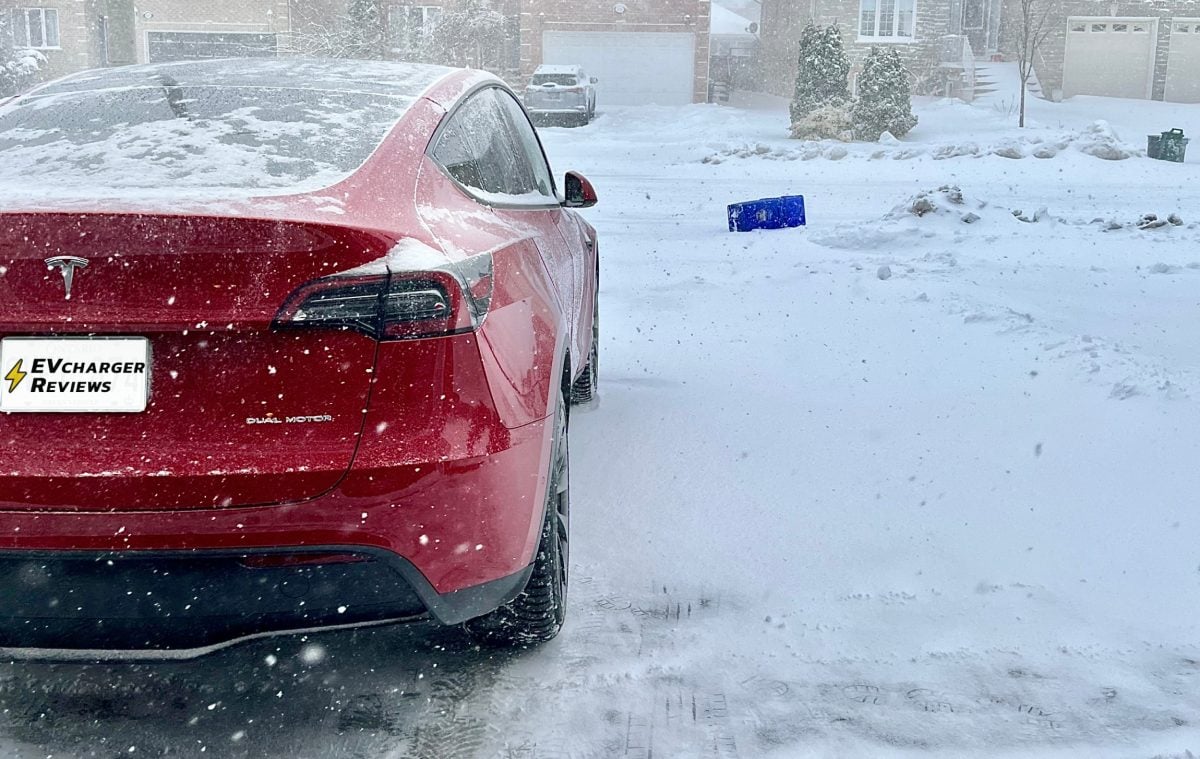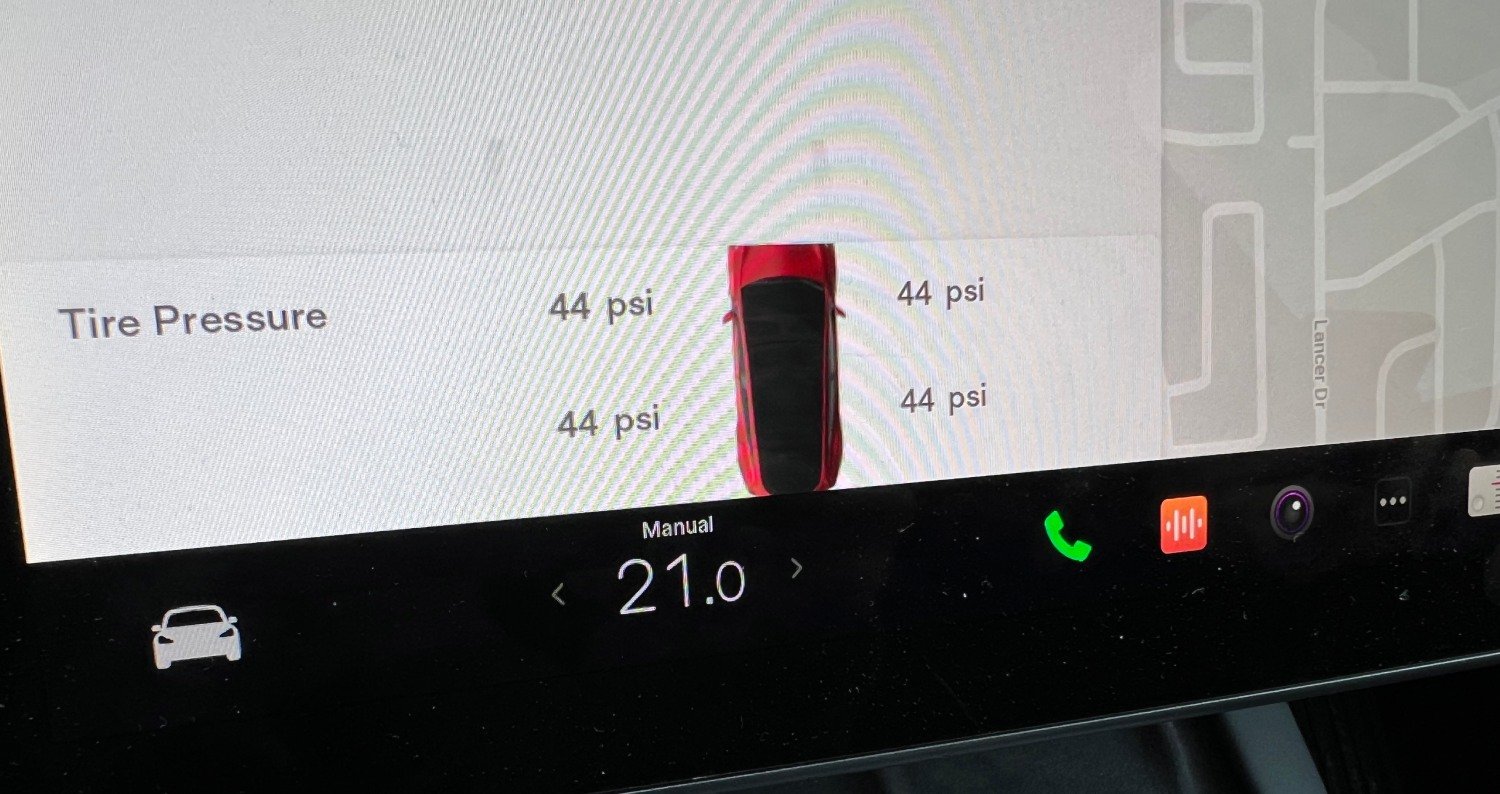We are now in the proper deep winter months in the northern hemisphere. Have you noticed a reduction in range while driving your electric car? All cars consume more energy and fuel in the cold winter months, including gasoline combustion cars and battery electric vehicles.
Not only is cold air denser and resists motion through drag, but passengers will also require more energy for heating and comfort. Many EVs take a larger range penalty in the cold than gasoline cars, because EVs are so much more efficient to begin with. Now let’s look at some obvious and not-so-obvious ways of extending winter range for EVs, and help alleviate any range anxiety.
1. Check Tire Pressures
Underinflated tires can increase the rolling resistance of the EV significantly. Even just a few PSI under the recommended pressures can increase energy consumption by several percentage points. Why are underinflated tires a common problem in the cold? Because air density increases in cold weather, the pressure inside the tires will decrease. For example, I had my winter tires fitted to my Tesla Model Y in November when the air temperatures were hovering around a mild 41° F (5° C), and the tire pressure was set to the recommended 42 PSI. But when temperatures plunged to 10° F (-12° C) a month later, my tire pressures dropped to just 37 PSI! The air didn’t leak, the pressure dropped because the air density increased when it got colder.
Check your tire pressures throughout the cold season and adjust them accordingly to spec.
2. Precondition/Pre-Heat the Car While Plugged in
Many EVs have functions for scheduling a departure time. This will precondition both the cabin and the battery in advance of driving, while the car is still plugged into the grid. Just like a gasoline internal combustion engine car, an EV operates most efficiently at an optimal operating temperature.
If you start a trip with a cold battery (or engine), it will take some of the onboard energy to heat the drivetrain until it reaches optimal efficiency. EVs have an advantage here because they can be pre-heated while plugged into a wall charger, so they begin the journey fully prepped and heated. On a Tesla, this function is called Scheduled Departure. Similar features exist on most EVs.
You may notice this is especially true on short journeys. The energy consumption will be much higher because there is more energy overhead to warm the drivetrain and cabin on a short trip, so consumption will be higher. On longer journeys, the consumption will average out lower after the drivetrain and battery reach optimal temperatures. Preconditioning prior to departure will help increase efficiency on short trips.
3. Heat the Seats, Not the Cabin
To get the most range on road trips, set your HVAC temperatures and fan speeds lower, and rely more on the heated seats instead. Applying electric heat directly to your body is more efficient than heating the entire volume of the cabin’s air.
Running the HVAC heater in an electric car is going to cost energy, and therefore range. Although more sophisticated EVs come with heat pumps instead of traditional electric PTC heaters, heating the cabin will still reduce the range in all EVs. Gasoline combustion cars take a smaller range penalty here because cabin heat is extracted from the waste engine heat.
4. Drive in the Clean/Dry Lanes
This one is similar to having underinflated tires. Did you know that driving on wet asphalt creates more rolling resistance than on dry pavement? There is actually a measurable difference of several watt hours per mile more energy consumption. Driving on compacted snow/slush is going to increase rolling resistance even further.
So when driving in snowy conditions on the freeway, pay attention to the lanes with the least moisture and slush. Not all lanes are going to be equally used, and the lanes that are the clearest will offer the least resistance (and range impact) on your EV trip.
5. Stick to the Speed Limit on Freeways
If you’re unsure whether you have enough energy to reach your destination, try slowing down to the posted speed limit (or even below). Energy consumption increases exponentially with speed. Going from 55 mph to 75 mph can increase energy consultation in watt hours per mile by as much as 30%. That is 30% less range on the same amount of energy.
This is especially true in the winter when the air is more dense and offers even greater levels of air resistance. And the faster you are traveling through the cold air, the greater the chilling effect becomes on your cabin and EV battery, thus requiring even more energy consumption for heating.
6. Pre-heat the Battery Before DC Fast Charging
In advance of fast DC charging (or Supercharging Teslas), make sure your EV is preconditioning the battery while en route. This is especially important during colder winter temperatures as the battery will be otherwise cooling down while driving. A warm battery will be able to charge faster, and therefore add more miles of range to your EV faster.
Related
- Why Home EV Charging is at 240V and Public Charging is 208V?
- Tested: Heat Pump in Cold Weather – How much range is lost?


